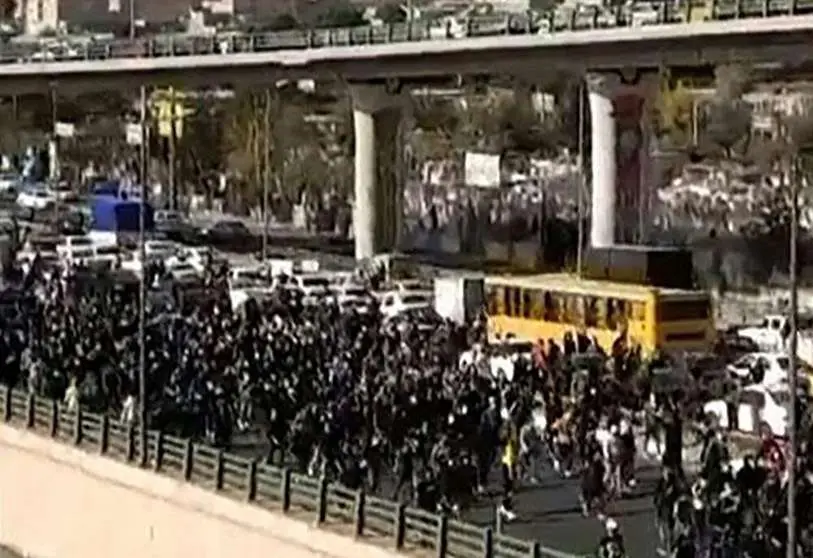Spontaneous movement?

The protests were sparked by the tragic death of Mahsa Amini, a 22-year-old Kurdish woman. But this tragic incident ignited a society that was about to explode.
We are witnessing a 41-day protest movement in 198 cities in all provinces of Iran against the brutal repression of a ruthless dictatorship. There is no sign that the protesters are relenting or that the protests are waning. This fact alone suggests the existence of structure and organisation. Those who see the protests as a spontaneous movement ignore that, without some form of organisation, protests with a unified demand to end the regime could not survive the regime's brutal repression.
Moreover, the regime's security apparatus, including the IRGC, is organised to prevent these demonstrations from taking place. Therefore, to assume that they are spontaneous is a simplistic analysis of the situation.
The objective conditions in Iran constitute the real context in which these protests are taking place. More than forty years of political and social repression, economic corruption and mismanagement have led to this moment. It has its roots in forty years of organised resistance and in the crimes of the regime, such as the massacre of 30,000 political prisoners in 1988, mainly because they refused to renounce their (political and ideological) position. These events are part of Iranian history and are embedded in the conscience of the Iranian nation that cannot be erased.
Moreover, in recent years, the MEK's Resistance Units have carried out extensive outreach activities throughout the country, writing graffiti on walls, hanging posters and, most importantly, attacking and burning all symbols of the regime, including pictures of Khamenei and Qassem Soleimani, the notorious commander of the Al-Quds Force. These activities have instilled in Iranian youth and women a culture of resistance, which is manifested in this uprising of the daring fighting spirit of the younger generation and in the attack on all symbols of the regime.
These Resistance Units also play a vital role in launching or managing the continuation of the protests, as well as in leading them, focusing on the Iranian people's fundamental demand for regime change.
The regime's inhumane behaviour towards women, through gender apartheid policies and compulsory veiling, was one of the main factors that triggered the protests following the tragic assassination of Mahsa Amini. Women were also instrumental in encouraging the population to express their outrage against the regime and join the protests.
However, the demand of the Iranian people, including women, goes beyond this issue, and their main demand is the abolition of the religious dictatorial regime in its entirety. Because Iranian women know very well that gender equality cannot be achieved as long as this regime is in power.
The active presence and leadership of women in the uprising is not a spontaneous phenomenon. They are a major force for change for a reason. Misogyny is rooted in the dominant religious tyranny. From the day the mullahs seized power after the 1979 Iranian anti-monarchist revolution, they have made it clear that the oppression of women under the guise of religion is the basis of all their policies and a strategic priority. Therefore, Iranian women's struggle for equality has been going on for decades and remains essential to achieving freedom and democracy for the entire population.
Since the 1980s, the regime has killed thousands of brave women and tortured tens of thousands more in prison. Today's women and girls who defy the regime's monstrous repressive forces have inherited their courage and resistance.
The fact that the elected president of the main democratic opposition, the National Council of Resistance of Iran, is a woman, Maryam Rajavi, has inspired generations of women to know their rights, to fight at all costs to preserve them and to empower themselves. In front of 25,000 people at Earl's Court in London on 21 June 1996, she said: "The misogynist mullahs are determined to destroy the rights and freedoms of Iranian women and to trample on their dignity. In doing so, they want to consolidate the pillars of their authoritarian regime. To the misogynist mullahs, I must say that they are completely wrong; they will never achieve their desires. They have used every possible form of humiliation, oppression, repression, torture and murder against Iranian women. But rest assured that you will receive the death blow from those you never count on. Of course, your reactionary nature does not allow you to consider them. But rest assured that your oppressive regime will be swept away by the conscious and free women of Iran".
For years, experience has shown that this regime will not change its behaviour. It will continue the brutal repression until its last breath. In the face of such a regime, civil obedience as a central or main tactic will never succeed and cannot be a viable strategy. Similarly, it is simply naïve to expect the IRGC to change sides.
Based on this strategy, the Iranian opposition began the arduous task of forming Resistance Units in 2014. It believes that an organised network inside Iran is essential to overthrow the regime. In 2021, some 1,000 Resistance Units sent video messages to the annual Resistance summit to underline their determination to overthrow the regime. In 2022, 5,000 members of the Resistance Units made the same commitment in videos.
The persistence of anti-regime protests across the country and the passion and fearless enthusiasm of the younger generation to confront the repressive forces are testimony to the unified strategy of society as a whole to overthrow the regime.

